How spending at department stores has changed in the last three decades
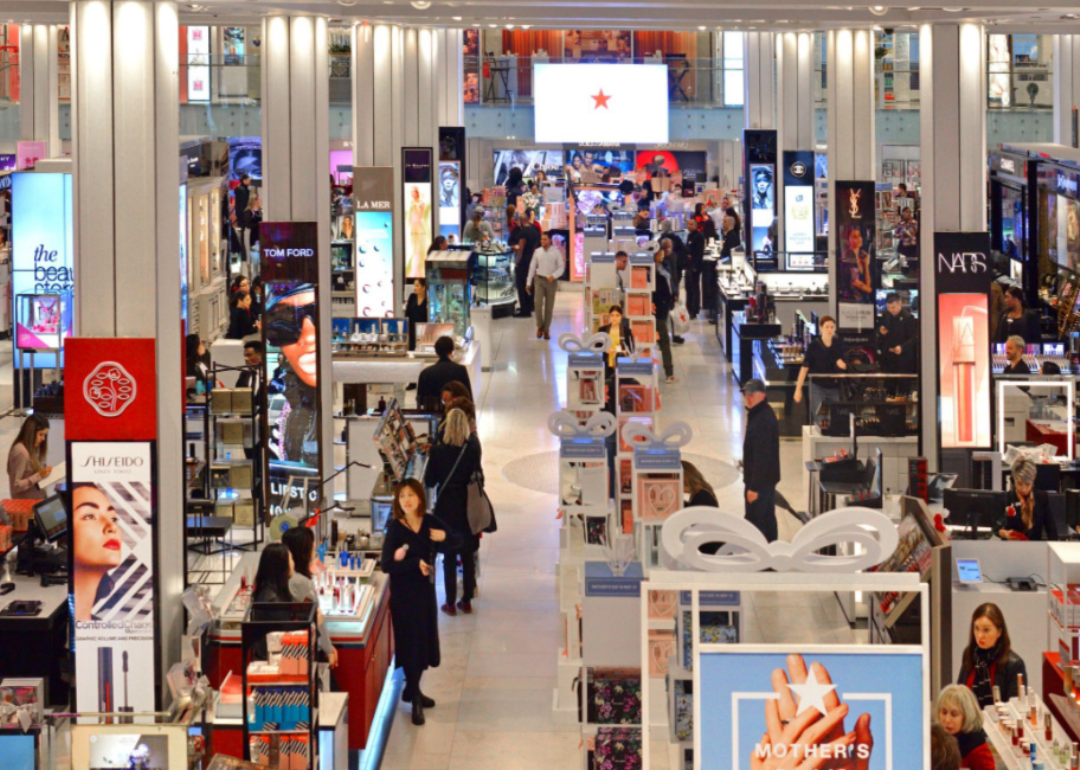
Popova Valeriya // Shutterstock
How spending at department stores has changed in the last three decades
Wide view of customers shopping in a department store.
Long before there were e-commerce retailers with next-day shipping, buy-now-pay-later financing, and advertisers tracking every click, there were department stores with friendly human associates and layaway services.
The U.S. Census Bureau defines department stores as retailers “that have separate departments for general lines of new merchandise, such as apparel, jewelry, home furnishings and toys, with no one merchandise line predominating.” For decades, the department store model ruled retail, but as consumer habits shifted away from shopping malls, its popularity waned. Americans have been increasingly shopping online, a trend accelerated by the pandemic, which has led to decreased spending at most types of brick-and-mortar stores.
As a result, many big-name department stores struggled through the 2000s, and after the pandemic started, many big-name retailers had to file for bankruptcy protection. A number of established department store brands still standing today have reestablished themselves post-bankruptcy as updated, modernized versions of their old selves.
Take Nordstrom, for example. The department store spent recent years consolidating retail space and corporate structure, developing artificial intelligence that recommends customized outfits, and implementing “buy online, pick up in store” options—a purchasing method that’s become the brand’s most profitable consumer channel. But as a new chapter in retail shopping opens, it’s still unclear how fast large brands like Nordstrom can continue adapting to changing consumer habits and tastes.
To better understand how department store sales have changed over 30 years, Experian examined data from the Census Bureau’s Advance Monthly Retail Trade Survey to analyze retail habits and trends. Since its inception in 1992, the survey has estimated monthly sales for retail and food service companies based on surveys completed by retailers with at least one or more physical stores that sell items directly to consumers.
![]()
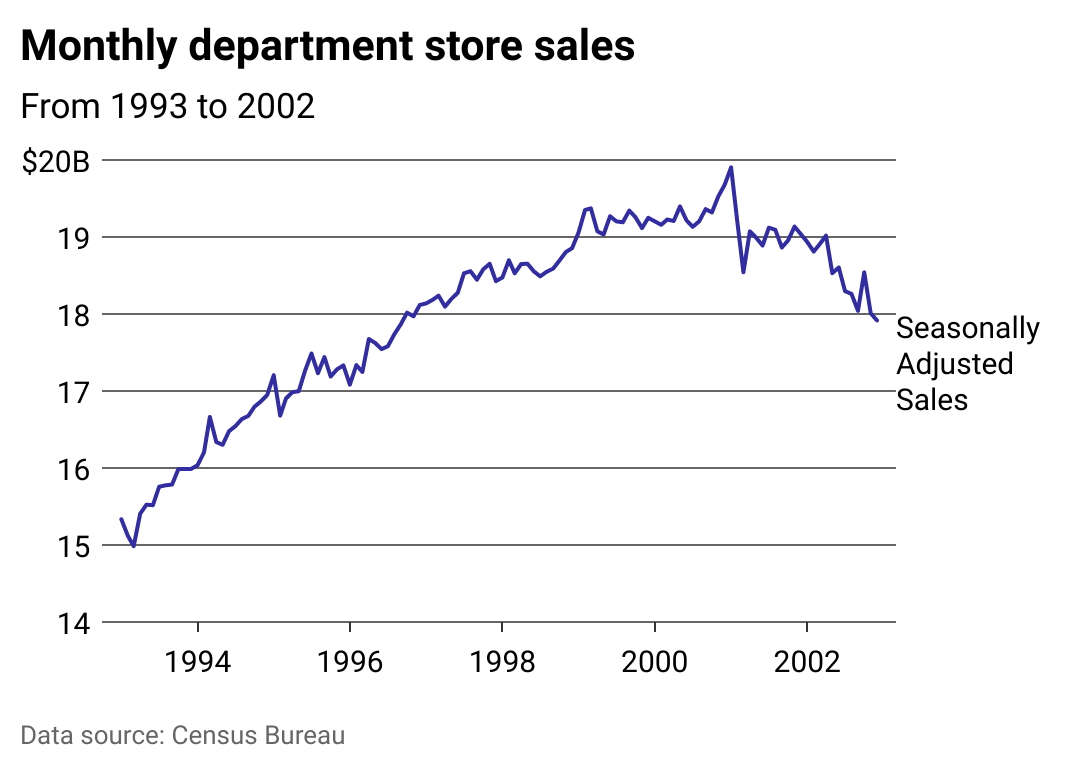
Experian
Department store spending grew in the 1990s, peaked in early 2000s
Chart showing department store spending from 1993 to 2002.
The popularity of department stores—multistoried, all-under-one-roof retailers that often anchored shopping malls in suburbs across the country—boomed through the 1990s. Spending peaked in January 2001 at $19.9 billion in sales. That same year, Sears was on a growth tear, easily outpacing its bankrupt competitor Montgomery Ward.
Montgomery Ward had failed to fend off a rising Sears in the late 1900s, and Sears absorbed much of the retailer’s employee base and store footprint a century later in the early 2000s. However, while Nordstrom continues to thrive, Sears, Roebuck and Co. filed for bankruptcy in 2018.
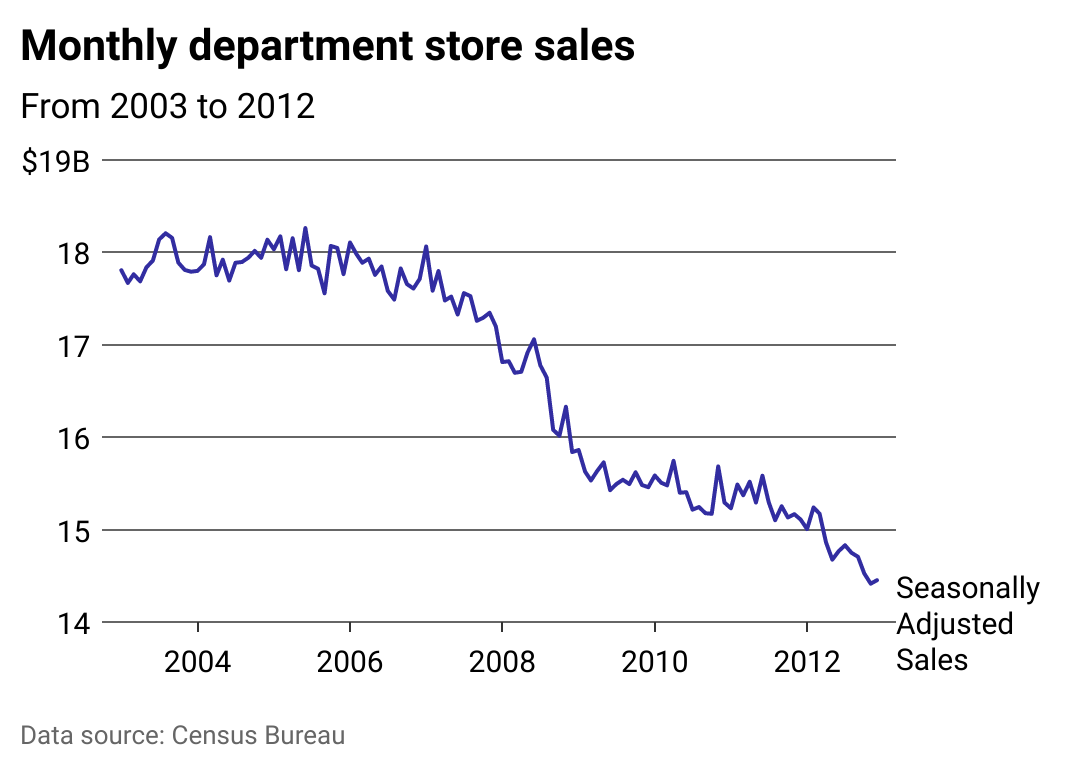
Experian
Retail spending began to decline in the late 2000s
Chart showing department store spending from 2003 to 2012.
Throughout the 2000s, spending at U.S. department stores steadily declined. This decline was exacerbated by the 2007-08 financial crisis, during which time many department stores, such as Hecht’s in the mid-Atlantic and South, consolidated with regional brands after getting bought out by more successful retailers. Others, like Pennsylvania-based Boscov’s, threw in the towel and filed for bankruptcy protection.
By 2008, the holiday shopping season began not with a bang but a disappointment: At the time, experts deemed November 2008 to be the worst month in 35 years for retail sales. Department stores took it on the chin, seeing the most significant declines in spending compared with retail peers.
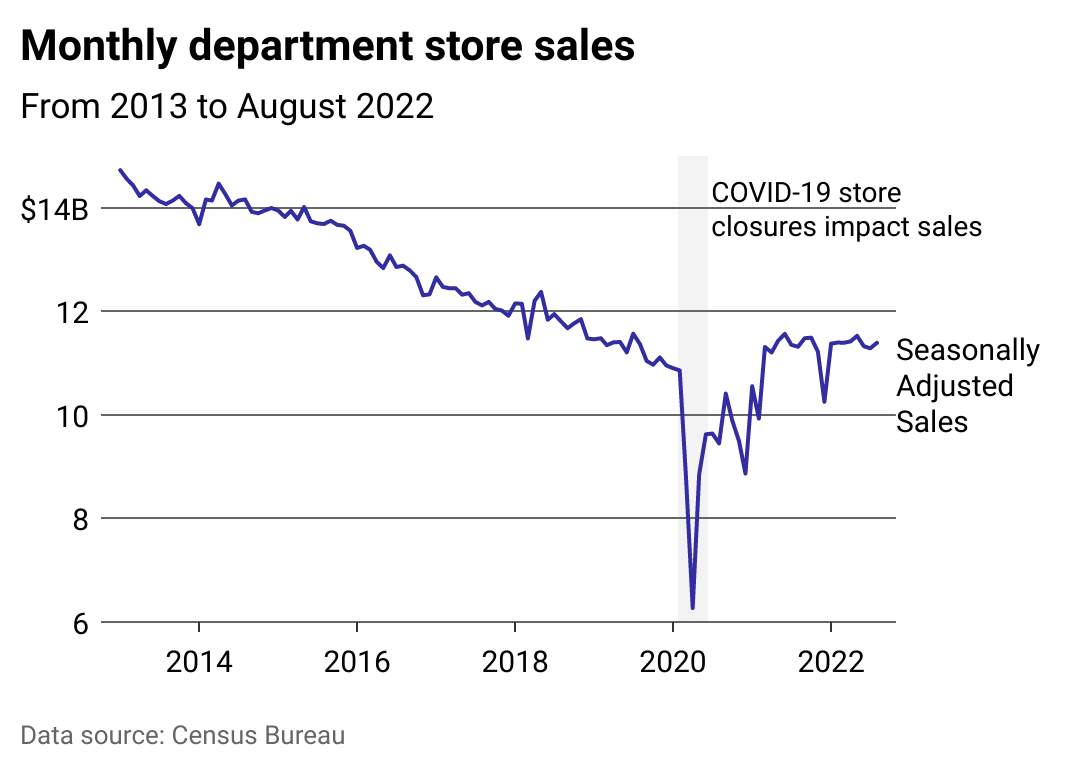
Experian
Spending declines continued in the 2010s, more retailers shutter during pandemic era
Chart showing department store spending from 2013 to present.
The pandemic was the final blow for many longtime industry heavyweights.
The end was already near for Century 21, Stein Mart, Lord & Taylor, Stage Stores, Neiman Marcus and JCPenney—all of which filed for bankruptcy in 2020.
Spending at department stores had declined throughout the 2010s, but the brick-and-mortar storefronts anchoring malls quickly became ghost towns as consumers stayed home. The country entered a two-month recession that ended in April 2020, a short but deep disruption during which millions lost their jobs. Some retail stores temporarily stopped or restricted in-person shopping in accordance with public health recommendations. In 2020, clothing manufacturers shuttered their production for more than a month on average as they scrambled to implement new safety protocols and find workers and supplies to make garments.
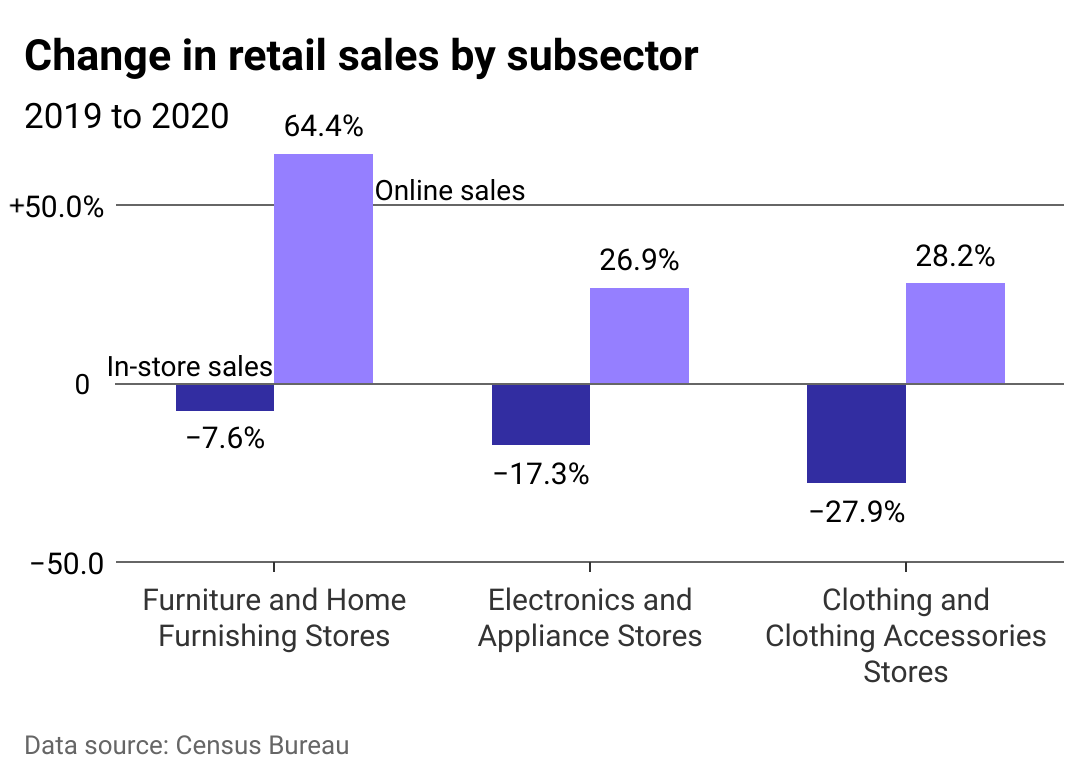
Experian
Shoppers turned to online shopping during pandemic
Chart showing change in online and in-store shopping sales from 2019 to 2020.
In 2020, consumers spent far less time shopping in person: This affected retail sales in clothing, electronics and furniture stores. The lack of consumers forced retailers with a presence in the e-commerce space to rapidly expand inventories to meet demand. But as buyers return to malls and in-person shopping, some online retailers like Wayfair and Shopify are worried that a weak winter shopping season may decelerate online retail growth.
This year’s holiday season represents an interesting litmus test to determine whether in-person shopping can see a strong return.
This story originally appeared on Experian and was produced and
distributed in partnership with Stacker Studio.